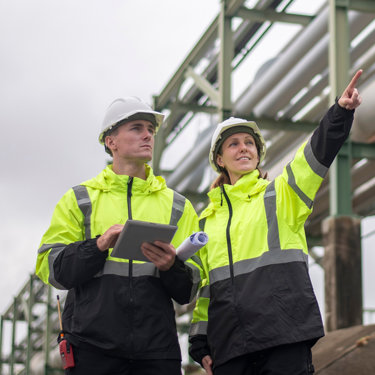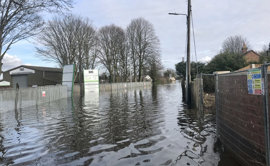Sustainable remediation: An innovative and award-winning approach to sensitive ecology
Published: 18 November 2024
On 26 February 2024, we were called to the emergency clean-up of an estimated 10,000-litre red diesel spill at a site in Chippenham.
Caused by a failed feed line in underground pipe ducts, the loss entered the site’s drainage system and subsequently flowed off-site into a brook. The diesel migrated downstream through the brook and into the River Avon, flooding into a wetland habitat.
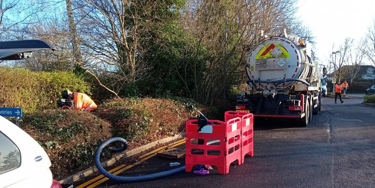
We engineered a swift, sustainability-led solution that addressed immediate contamination hazards and encouraged long-term environmental renewal. Our forward-looking approach used responsible transport, remediation, and reinstatement to drastically reduce waste and emissions and restore the site’s fragile ecological balance.
We’re delighted that our innovative approach was recognised by the industry lead body at the UK & Ireland Annual Spill Awards, earning us the prestigious Sustainability Award.
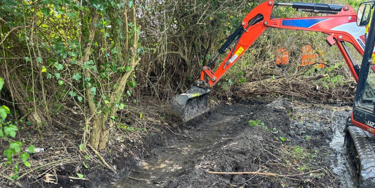
Quick response, complex requirements
Within one day, our team implemented multiple containment areas, including a pipe dam and weir structure, to prevent further diesel migration into the wider environment. Alongside our first responders, our qualified ecology specialists established a daily surface water sampling regime to monitor and mitigate further pollution risks.
While our teams were quick to contain the spill, the broader clean-up programme proved more complex. The site presented a wide range of limitations and challenges:
- Sensitive ecologies: Although the site is not located within a designated area, the impacted field has become a natural wetland over time, offering favourable ecological conditions for sensitive species.
- Human activity: The site lies within a large green space used frequently by members of the public, with newly constructed cycle paths linking the surrounding residential towns.
- Weather and river fluctuations: The spill zone is found in an area prone to flooding. During periods of heavy rain, the River Avon often bursts its banks, flooding the site and surrounding landscape.
- Location: Bordered by residential housing and the River Avon, the site is situated within open parkland with no access routes in or out of the area. It is also third-party property, which complicates the works approvals process.
- Diverse stakeholder demands: The ongoing project involves multiple stakeholders with unique work requirements, priorities, and timescales.
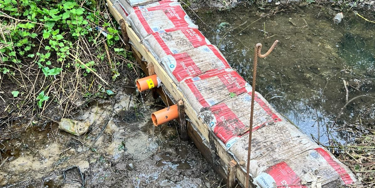
Driving sustainability with on-site remediation
Working in collaboration with our client, we proposed and evaluated multiple clean-up strategies, using a detailed remediation options appraisal considering technical suitability, practicality, duration, disruption levels, environmental sustainability, and cost.
Due to restricted access issues, the site’s neighbouring residential areas, and potential risk to third-party land, we opted for on-site bioremediation over traditional ‘dig and dump’ methods. The project stakeholders also valued the bioremediation strategy’s sustainability benefits, including limited vehicle movements, lower greenhouse gas emissions, and reduced air and dust pollution.
To ensure continual protection of habitats and species, our ecology team has provided supervision and support throughout the remediation phase, and all activity has been completed under the guidance of an Ecological Clerk of Works (ECoW).
The ongoing remediation process includes:
- Contaminated soil excavation: Polluted soils were removed until clean margins were achieved. Extensive validation sampling was completed to ensure no contamination was left in place.
- Soil venting: Contaminated soils were stockpiled within a 10 x 50m bund and are actively venting on-site using air compressors to facilitate the volatilisation of residual diesel contamination. This process will take a minimum of six months.
- Run-off filtration: In the event of heavy rainfall, accumulated water run-off within the bund sumps is collected and run through a granular activated carbon (GAC) filtration system where necessary.
- Water recycling: The collected water is then reused as part of the remedial works to maintain optimum soil moisture content within the treatment bunds. Water may also be used for the flushing and circulation of any bio-treatment additive that may be applied.
- Final validation: Validation sampling of the soils within the bund will be completed to demonstrate the successful removal of contamination prior to reinstatement.
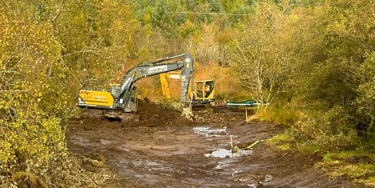
Eliminating waste, emissions, and environmental hazards
Reducing waste, emissions, and risk are key strands of our remediation strategy. Soils removed during the works will be allowed to recover naturally over time. Following biodegradation of contaminated soils and conclusive soil quality validation, excavated material will be reinstated within the site, delivering significant financial and environmental benefits:
- This methodology minimises the volume of waste going to landfill, as all soils removed will be reused. An estimated 1,000m3 (1,670 tonnes) of excavated material will be replaced as part of the works.
- With no soil waste going to landfill, no HGVs are required to transport materials to waste facilities. This prevents 52 lorry loads travelling 134 km to the nearest landfill site – and avoids a further 52 empty return trips.
- This approach eliminates emissions of circa 26 tCO2e – the equivalent sequestered by one hectare of woodland each year, or enough CO2 to fill 13,000 fire extinguishers.
- Keeping soils on-site also removes disturbances to nearby residents, such as increased traffic, contaminated dirt on the roads, dust generation, and noise.
- Additionally, much of the works will be completed using materials and machinery that can be reused by suppliers at the end of the project, with a key aim of reducing single-use items on site.
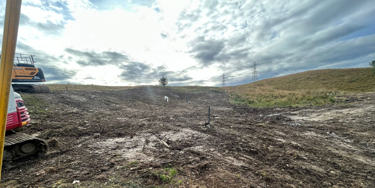
From an ecological standpoint, our reinstatement programme strengthens the spill location’s natural defences, helping to restore the site to an environmentally beneficial state.
- By preserving the soil, we remove environmental hazards posed by the introduction of foreign nutrients, possible contaminants, and microbial communities.
- Reinstatement also reduces the risk of contaminated run-off washing away from site and suffocating low-lying flora within nearby surface water receptors.
- Working side-by-side with stakeholders, we will ensure the site returns to ecologically favourable conditions, with the possibility of betterment.
We are delivering an innovative on-site bioremediation strategy that minimises ecological harm and spotlights the power of a low-impact approach. By prioritising sustainability over standard excavation and waste removal methods, we expertly tackled short-term pollution risks and are setting the standard for responsible, resource-efficient environmental management in future remediation projects.
More from our Knowledge Hub
Environmental compliance today, creating a sustainable tomorrow
Helping you reduce risk to the environment and your operation by managing assets compliantly while achieving commercial, ESG, and net-zero goals.
Contact our experts